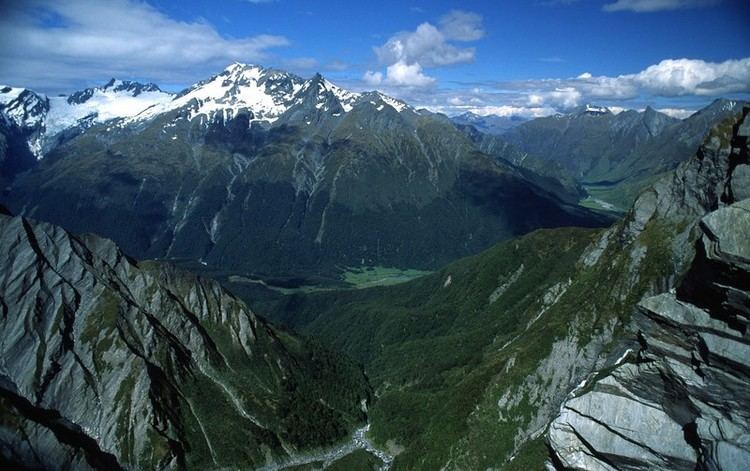 | ||
Protected areas of New Zealand are on both public and private land. Nearly 30 percent of the land mass of New Zealand is in public ownership and has some degree of protection. The level of protection varies according to the land status.
Contents
Protected areas
The Department of Conservation administers the majority of the publicly owned land in New Zealand that is protected for scenic, scientific, historic and cultural reasons, or set aside for recreational purposes. More than 80,000 km2 – nearly 30 percent of the nation's total area – is administered by the department.
There were 14 national parks (now 13), covering just under 25,000 km2, 30 Conservation Parks covering some 18,000 km2, about 3,500 reserves covering around 15,000 km2, and some 610 km2 of protected private land and covenants that have been set aside for scenic, scientific or ecological reasons. The department also has responsibility for the preservation and management of wildlife, and has a role in management of the coastal marine area with 19 marine reserves and two other protected marine areas from the Kermadec Islands to Fiordland.
Conservation parks
Conservation Parks defined in the Conservation Act 1987 to protect their natural and historic resources, and to facilitate public recreation and enjoyment. Prior to changes in 1987, many Conservation Parks were administered as Forest Parks, before the Conservation Act declared that all such parks would automatically become Conservation Parks in a legal sense.
Mainland islands
The Department of Conservation have set up five mainland islands:
Island reserves
Often referred to as Island Sanctuaries these off-shore islands have been set aside by organisations like the Department of Conservation as reserves for endemic and native New Zealand species:
Marine reserves
New Zealand has a total of 32 marine reserves spread around the North and South Islands, and two on outlying island groups. The first marine reserve was created in 1975.
National parks
There are 13 national parks, covering just under 25,000 km2.
National reserves
A national reserve is a reserve that has been designated as having national importance under section 16 of the Reserves Act 1977. Some have historic values and others have ecological values.
Regional parks
Regional parks of New Zealand are administered by regional councils.
Wetlands
New Zealand is a signatory to the Ramsar Convention, and as of 2008 there are six Ramsar-registered sites in New Zealand:
Travis Wetland is an ecological restoration project in Christchurch that was purchased by the city council as a nature reserve.
World Heritage sites
There are three World Heritage Sites in New Zealand:
